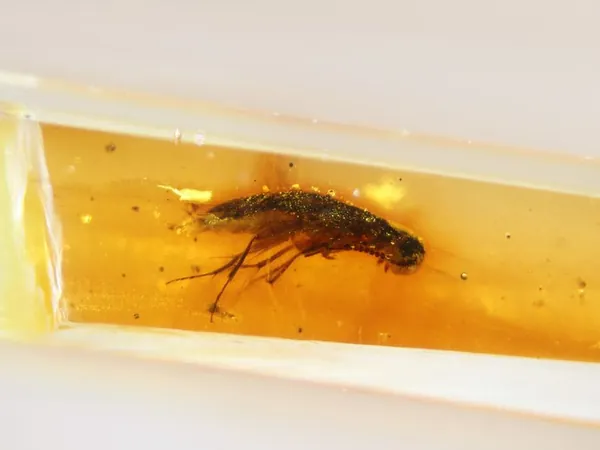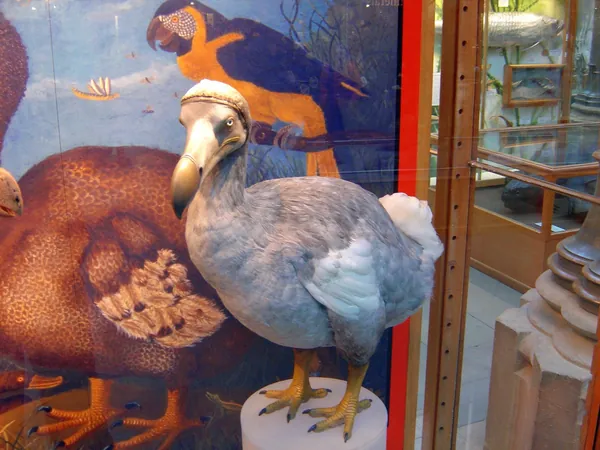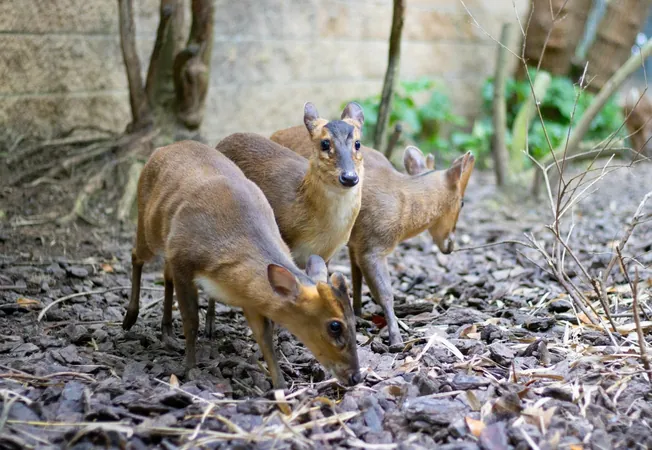
Ancient Amber Unearths Secrets of the Dinosaur Age in Ecuador
2025-09-21
Author: Amelia
A Glimpse into a 112 Million-Year-Old Ecosystem
In a groundbreaking discovery, amber unearthed from Ecuador's Amazon rainforest has revealed a remarkable collection of well-preserved insect fossils, allowing scientists to peek into a vibrant Cretaceous Period ecosystem bustling with life over 112 million years ago.
What is Amber? A Time Capsule of Ancient Life
Amber, the fossilized tree resin, often contains bioinclusions—trapped animals, plants, and fungi that were enveloped in the sticky substance before it hardened. Researchers uncovered this treasure trove in the Napo Province near Archidona, showcasing ancient insects and even remnants of a spider's web.
The Largest Dinosaur-Era Amber Deposit in South America
Historically, major amber deposits have been predominantly located in the Northern Hemisphere, making this discovery in Ecuador particularly significant. This site represents the largest known amber deposit from the age of dinosaurs in South America, a region that was once part of the vast ancient continent of Gondwana.
Insights from Paleoentomologists
"Discovering such an important site on Gondwana offers invaluable insights into an area where data about prehistoric organisms has been scarce," said paleoentomologist Xavier Delclòs from the University of Barcelona, who led the study published in *Communications Earth & Environment*.
What Did the Amber Reveal?
The amber revealed a diverse range of insects, including both biting and non-biting midges, wasps, aphids, caddisflies, and beetles. According to study co-author Mónica Solórzano Kraemer from the Senckenberg Research Institute, these insects provide clues to the ecology of their time.
The Blood-Feeding Midges
The biting midges are particularly intriguing; they likely fed on the blood of the dinosaurs that roamed the lush landscapes of the era.
Exceptional Preservation of Ancient Life
Delclòs explained, "Amber beautifully preserves the exoskeletons of small organisms, making them appear as if they just died, despite being millions of years old." This unique preservation process happens when tree resin traps living organisms, hardens, and subsequently transforms into amber in an oxygen-free environment.
A Peek into Ancient Flora
Along with the insects, fossilized plant remains found in nearby sediment reveal a crucial transition in Earth’s botanical history. The findings indicate that flowering plants, or angiosperms, comprised approximately 37% of the flora at the site, signaling the rise of this dominant plant group.
The Legacy of Flowering Plants
Angiosperms are now the largest and most diverse plant group on Earth, making up about 80% of all plants. The study of these fossils sheds light on the ecological shift from gymnosperm forests to the modern-day landscapes we recognize today.
A Window to the Past
Delclòs emphasized the significance of these findings, stating, "This discovery opens a window into the transition from gymnosperm-dominated forests to those flourishing with angiosperms, reshaping our understanding of ancient ecosystems."









 Brasil (PT)
Brasil (PT)
 Canada (EN)
Canada (EN)
 Chile (ES)
Chile (ES)
 Česko (CS)
Česko (CS)
 대한민국 (KO)
대한민국 (KO)
 España (ES)
España (ES)
 France (FR)
France (FR)
 Hong Kong (EN)
Hong Kong (EN)
 Italia (IT)
Italia (IT)
 日本 (JA)
日本 (JA)
 Magyarország (HU)
Magyarország (HU)
 Norge (NO)
Norge (NO)
 Polska (PL)
Polska (PL)
 Schweiz (DE)
Schweiz (DE)
 Singapore (EN)
Singapore (EN)
 Sverige (SV)
Sverige (SV)
 Suomi (FI)
Suomi (FI)
 Türkiye (TR)
Türkiye (TR)
 الإمارات العربية المتحدة (AR)
الإمارات العربية المتحدة (AR)